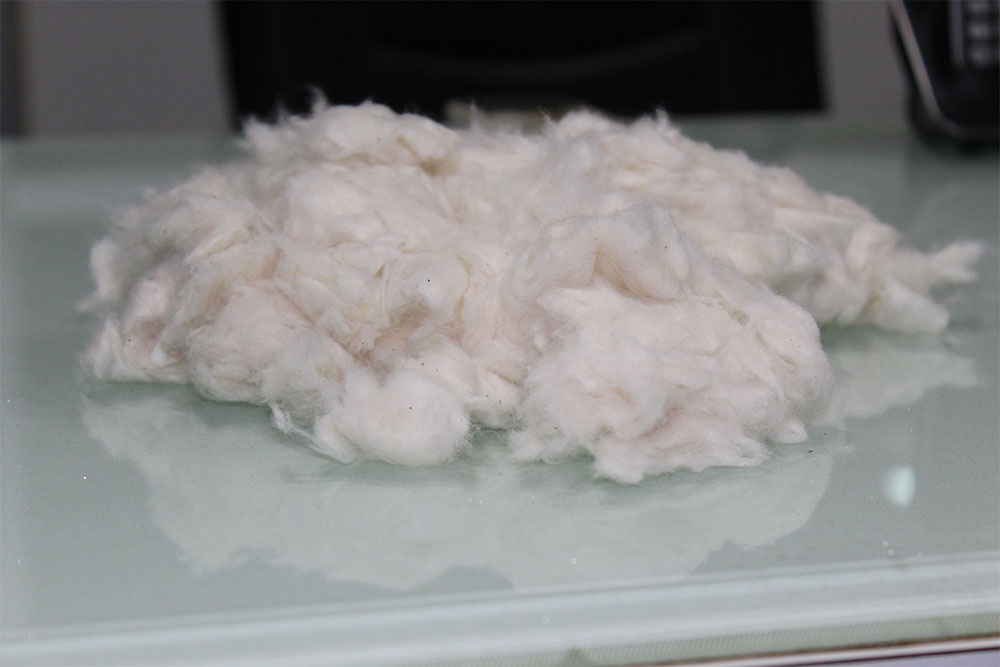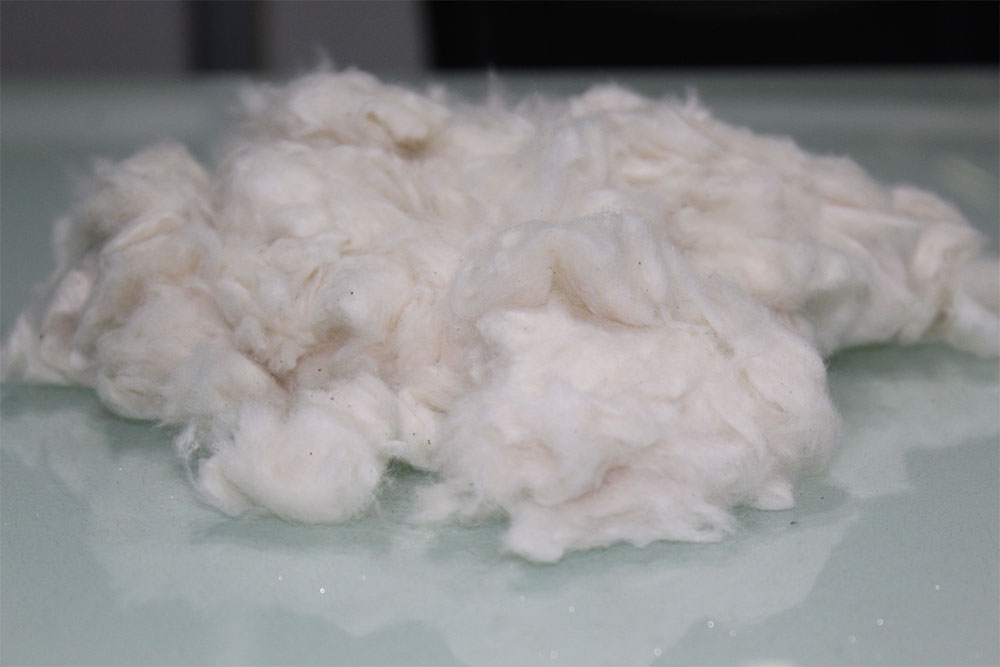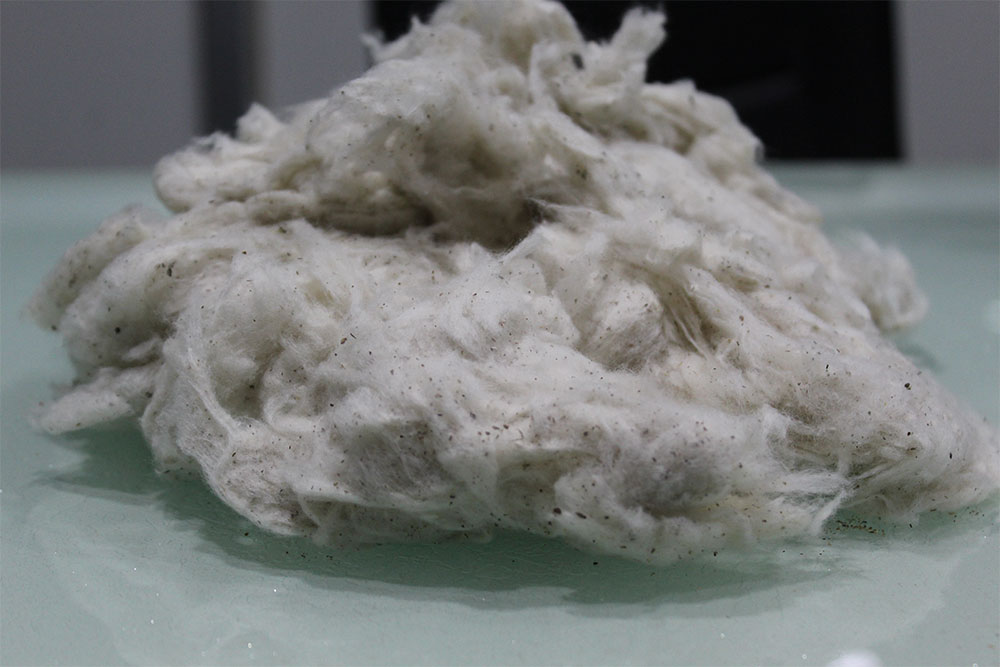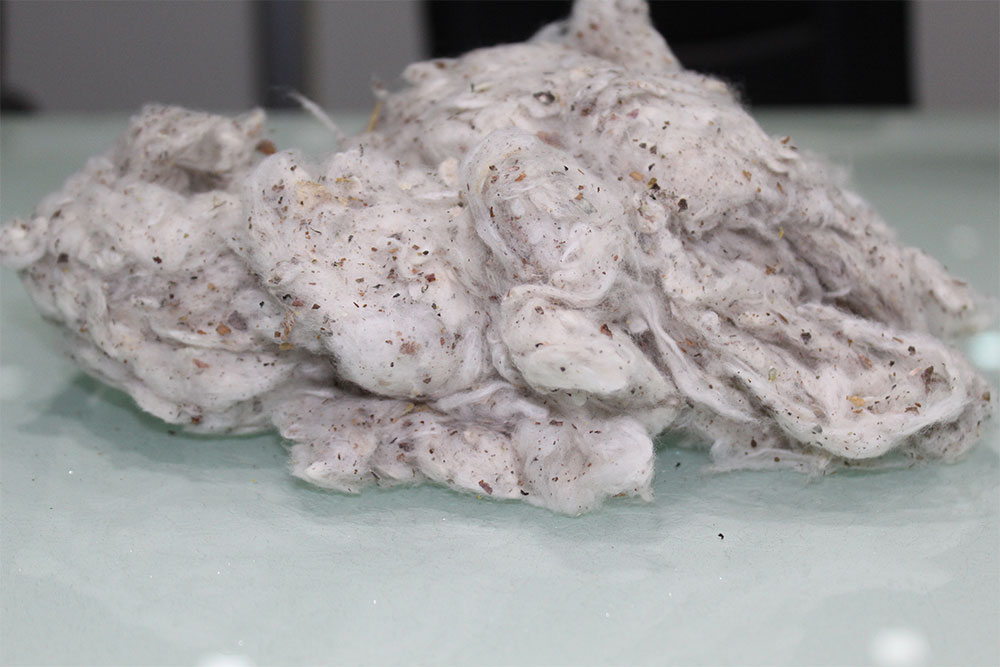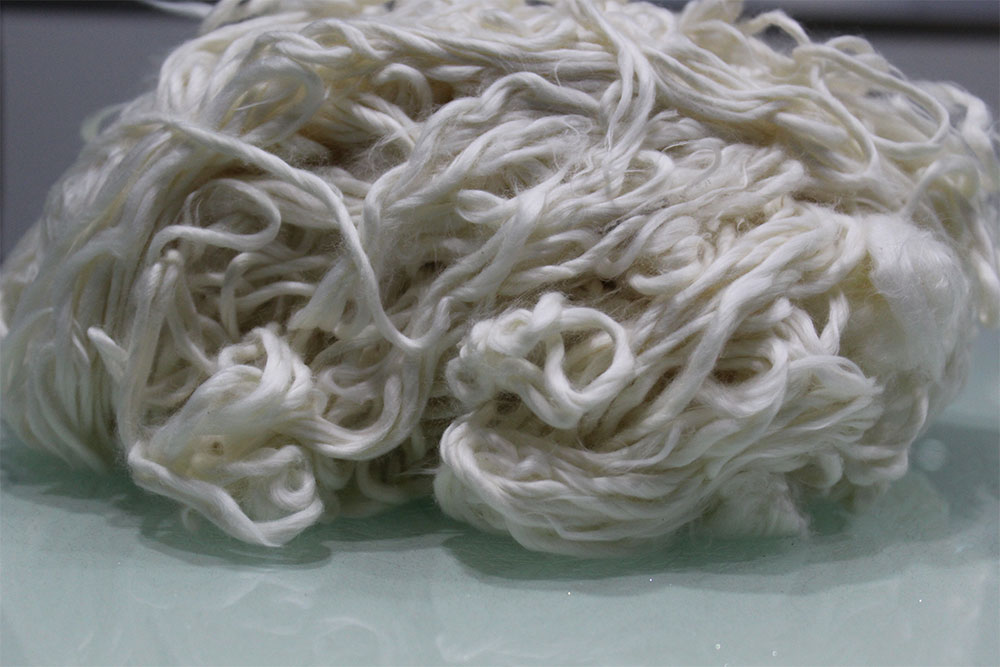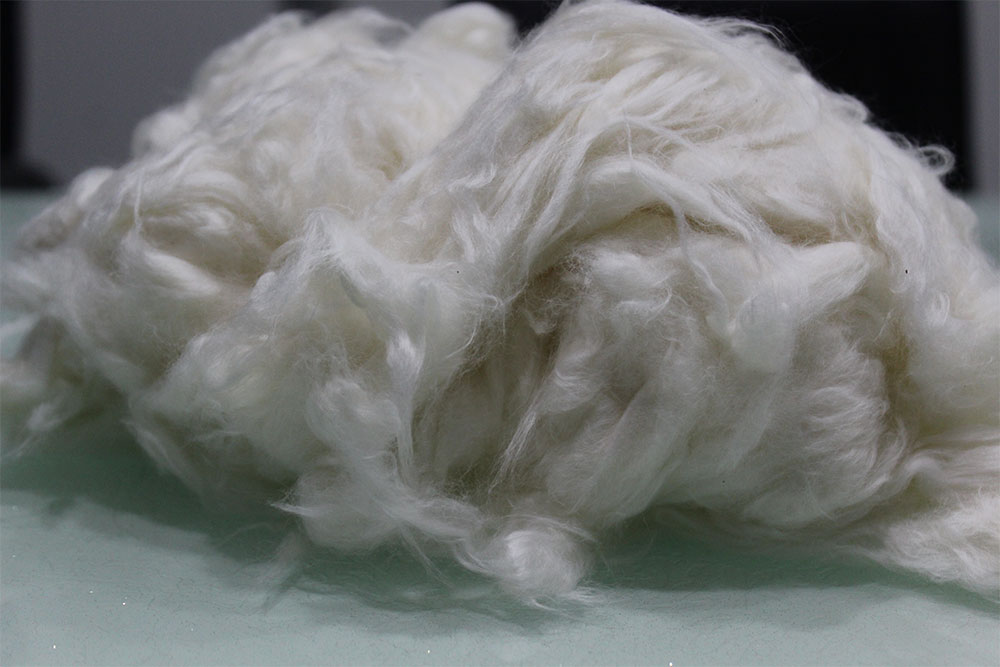Cotton Waste
Comber Noil
a residual fiber derived from the combing of cotton, represents a unique blend of short fibers meticulously separated during the spinning process. Our high-quality comber noil undergoes thorough processing to eliminate impurities, resulting in a refined product with superior characteristics.
Key Features:
- Fiber Purity: Our comber noil boasts exceptional purity, free from unwanted contaminants, and is meticulously combed to meet the highest industry standards.
- Absorbency: Recognized for its excellent absorbent properties, our comber noil is well-suited for applications demanding superior moisture absorption.
- Versatility: This product finds applications across various industries, including textiles, non-wovens, and more, owing to its versatility and compatibility with different manufacturing processes.
- Blending Excellence: Comber noil is renowned for its ability to blend seamlessly with other fibers, enhancing the overall quality and performance of the end product.
- Consistent Quality: We prioritize quality assurance, ensuring that each batch of comber noil maintains consistent quality, meeting and exceeding the expectations of our discerning clientele.
Explore the possibilities with our premium comber noil, an essential ingredient for industries demanding reliability, performance, and sustainability.
Common Applications:
- Blending with Other Fibers: Comber noil can be blended with longer staple fibers, such as cotton, to create yarns with specific characteristics. The short fibers in comber noil can add texture and improve the strength and absorbency of the final fabric.
- Nonwoven Fabric Production: Comber noil is often used in the production of nonwoven fabrics, which are used in applications like wipes, medical textiles, and automotive interiors.
- Open-End Spinning: Some spinning mills use comber noil in open-end spinning, where short fibers are mechanically twisted into yarns. These yarns are often used for coarser textiles like denim and carpet.
- Stuffing Material: Comber noil can be used as stuffing material for pillows, cushions, toys, and upholstery. Its short fibers can provide loft and resilience.
- Fiberboard and Insulation: Comber noil can be incorporated into the production of fiberboard or insulation materials, where short fibers can help improve the material’s structural integrity.
- Automotive Industry: In the automotive industry, comber noil can be used in various applications, such as soundproofing and insulation materials.
- Oil Absorption: Due to its absorbent nature, comber noil can be used in oil spill cleanup products to help absorb and contain oil spills on land or water.
- Agriculture: In agriculture, comber noil can be used in soil erosion control and as a component of animal bedding.
| TECHNICAL SPECIFICATION |
|---|
| Material: 100 % Cotton |
| Trash: 0-0.5 % |
| Type: Spinning Waste |
| Colour: Milky White |
| Length: 18-21 mm |
| Available in Standard Export Packing Bales 160 kg to 180 kg. |
Contamination-Controlled Comber Noil
Our Contamination-Controlled Comber Noil is a premium byproduct of the cotton spinning process, meticulously processed to ensure the highest level of purity and quality. Comber noil is known for its short and absorbent cotton fibers, and our commitment to maintaining stringent contamination control measures sets our product apart in the market.
Key Features:
- Exceptional Purity: Our comber noil undergoes rigorous processing and quality checks to guarantee contamination-controlled fibers. This results in a product controlled from foreign matter, dust, and impurities.
- High Absorbency: The short fibers in comber noil are renowned for their exceptional absorbent properties, making them ideal for a range of applications that require moisture retention.
- Versatile Applications: Contamination-controlled comber noil can be seamlessly incorporated into various industries and products, offering versatility and functionality.
Common Applications:
- Absorbent Products: Its outstanding absorbency makes it suitable for manufacturing absorbent pads, diapers, and feminine hygiene products.
- Paper and Cardboard: Used as a source of cellulose fiber in the paper industry, contributing to the strength and quality of paper and cardboard products.
- Security Paper & Currency Notes: Contamination-controlled comber noil is also used in the production of security paper and currency notes. Its unique properties, including its absorbency and compatibility with security ink, make it an essential component in creating durable and counterfeit-resistant currency notes and security documents.
Cotton Flat Strips
Cotton Flat Strips derived from carding machines represent a superior by-product in the textile manufacturing process. Sourced from the upper side of carding machines and related specifically to yarn counts ranging from 20’s to 50’s, these strips are cleaner and of higher quality than lickerine. Their intrinsic properties, including impressive fiber length, make them apt for various applications.
Key Features:
- Pristine Origin: Exclusively sourced from the upper side of carding machines, ensuring a premium quality compared to other by-products.
- Specific Count Range: Derived from yarn counts between 20’s to 50’s, guaranteeing a consistent product standard.
- Superior to Lickerine: Offers cleaner and longer fibers, positioning it as a preferred choice for many applications.
- Eco-Friendly: Utilizing these strips aids in the promotion of sustainable and efficient waste management in textile production.
Applications:
- Handicrafts: Given their clean and long fibers, they’re optimal for weaving, braiding, and intricate craftwork.
- Textile Reinforcement: Their quality and length make them perfect for integrating into textile products as reinforcing agents.
- High-end Rug & Mat Production: Suitable for premium handmade rug or mat creations.
- Spinning Extension: Can be reintroduced into certain spinning processes given their length and cleanliness.
Technical Specification
| Grade A | Grade B | |
|---|---|---|
| Blend | 100% cotton | 100% cotton |
| Length | 23mm to 24mm | 22mm to 24 mm |
| Trash | Below 8% to 10% | 12% to 15 % |
| Packing | Bales ( 140-155 kg ) | Bales ( 140-155 kg ) |
Cotton Carding / Lickerin
Cotton Carding is derived from a carding machine in the yarn production process, typically during the manufacturing of 20-50 count yarn. On the other hand, Cotton Dropping is obtained from the Blow Room Process in yarn production. It is a fiber-rich product with a low cost, making it highly valuable for recycled cotton and yarn production.
Key Features:
- Derived from Blow Room Process: Obtained from the Blow Room Process in yarn production, making it a vital byproduct in the textile manufacturing industry.
- Cost-Effective: A cost-efficient material with a fiber-rich composition, making it an economical choice for various applications.
- Sustainability: Supports sustainability initiatives by repurposing materials that would otherwise go to waste, contributing to eco-conscious practices.
- Recycled Cotton and Yarn: An essential component in the production of recycled cotton and yarn, offering eco-friendly alternatives in textile manufacturing.
- Absorbent Properties Due to its fiber-rich nature, Cotton Dropping possesses excellent absorbency, making it valuable in absorbent product manufacturing and oil spill cleanup applications.
- Wide Range of Uses: Versatile and adaptable, Cotton Dropping finds applications in nonwoven fabrics, agriculture, crafts, soundproofing, insulation, and more.
Common Applications:
- Recycled Cotton and Yarn Production: Cotton Dropping plays a crucial role in the production of recycled cotton and yarn, making it a sustainable choice for textile manufacturers.
- Nonwoven Fabric Manufacturing: It is a preferred material in nonwoven fabric production, used for making products such as wipes, medical textiles, and automotive interiors.
- Crafts and Art Projects: Craft enthusiasts often use Cotton Dropping in various creative projects due to its texture and versatility.
Technical Specification
| VARIETY | LICKERIN A GRADE | LICKERIN B GRADE |
|---|---|---|
| LENGTH | 25-26 mm | 22-24 mm |
| MIC | 3.5-4.0 | 3.2-3.8 |
| TRACE | 20-25% | 30-35% |
| COLOUR | Natural | Natural |
Cotton Roving
Cotton roving is a slender, continuous piece of gently twisted cotton fibers that represents an intermediate stage in spinning yarn from raw cotton. It’s created by further drawing out and lightly twisting slivers from the carding machine. Cotton roving is the precursor to the final yarn, being thicker than yarn but thinner than sliver.
Key Features:
- Natural Composition: Made from 100% cotton fibers, ensuring a soft and natural touch.
- Intermediate Spinning Stage: Represents a key phase in the process of transforming raw cotton into yarn.
- Minimal Twist: Lightly twisted, allowing for easier spinning into finer yarns.
- Consistent Quality: Provides uniformity which is crucial for producing consistent yarn.
Common Applications:
- Spinning: Directly used to spin finer yarns in textile mills.
- Hand Spinning: Hobbyists and crafters often use cotton roving for hand spinning.
- Felt Making: Can be integrated into certain felting processes.
- Crafts: Used in various crafts, including needle felting and doll making.
Technical Specification
| Span Length | 31mm |
|---|---|
| Strength | 26 grams/tex |
| Mic | 3.5 to 4.0 |
| Color | Natural |
| Trash | 0% |
Cotton Pneumafil
Cotton Pneumafil is a high-quality by-product generated during the cotton yarn spinning process. Its emergence during the transformation of raw cotton into spun yarn gives it distinctive attributes. With fibers groupings ranging in thickness from 23 – 29 mm, it exhibits a whiteness superior to raw cotton and comber noil. This purity, combined with its fine quality, makes it highly sought after in specialized applications.
Key Features:
- Premium Quality: Recognized as one of the finest grades of cotton waste, embodying purity and consistency.
- Optimal Fiber Thickness: With thicknesses ranging from 23 – 29 mm, it offers a unique texture and consistency.
- Enhanced Whiteness: Its superior whiteness compared to raw cotton and comber noil makes it ideal for applications demanding purity.
- Origin: Directly derived from the yarn spinning process, ensuring authentic and premium cotton content.
Common Applications:
- Fancy Yarn Production: Its distinctive texture and whiteness make it ideal for crafting specialty yarns.
- Medical Supplies: Leveraged in the production of specific medical products requiring purity and softness.
- Cosmetics Industry: Incorporated into certain cosmetic products, benefiting from its fine texture and purity.
- High-Quality Fillers: Used as fillers for premium products that demand the softness and cleanliness of Pneumafil.
Technical Specification
| Span Length | 30-31mm |
|---|---|
| Strength | 26 grams/tex |
| Mic | 3.5 to 4.0 |
| Color | Natural |
| Trash | 0% |

